“A mind can make a heaven out of hell, or a hell out of heaven.” -Costa Rican proverb
Other Pandemic National Case Studies can be found here.
Costa Rica! The beautiful Central American nation of just over five million people that fully traded in its military---largely to fund education. Also the home of health and fitness guru Ari Whitten, and while I’m not a particularly jealous person, his description of life there struck with me a mild chord of envy.
In early March, 2020, SARS-CoV-2 started to penetrate into every nation in North America. But out of all of them, Costa Rica was the first to take a broad step in the direction of an early treatment policy. On March 18, Costa Rica participated in a video conference, offered by the Chinese Embassy, with officials including both the Director-General and the Director of Epidemiology for the Chinese Center for Disease Control and Prevention. In that call, Costa Rican officials were taught China’s protocols for using hydroxychloroquine (HCQ) to treat patients. Costa Rica manufactures HCQ, and was in a good position to immediately and broadly make use of it. The results were stunning. Remember---this is still prior to HCQ’s Trump moment. Though Our World in Data [for some strange reason] no longer displays case fatality rates (CFRs) from those early days of the pandemic, I got your back. I saved a few choice graphs, and here is one of my compiled images. Apologies for the size compression. Cases on the left and CFR on the right (Costa Rica on the bottom). Costa Rica clearly performed far better through the end of July, 2020 than the rest of Central America or all of North America for that matter.
In the wake of the Surgisphere debacle (here and here), the WHO convinced Costa Rica and several other nations to stop using HCQ to treat COVID-19 patients, but Costa Rica quickly resumed HCQ treatment protocols when it was clear the recommendation was based on a fabrication. Strangely, U.S. health officials seem to have never once contacted Costa Rica to discuss their treatment results. Thus, they remain “anecdotal”. Just like it never happened!
Costa Rica never saw cases surge until hospitalized patients began to pile up untreated during that hiatus.
After suffering around two thousand COVID-19 fatalities during the Winter, Costa Rica’s outbreak relented for a while before a surge began in March and accelerated in early May...
Mass Vaccination in Costa Rica
Costa Rica’s economy is one of the most service-oriented in the world. During 2020, Costa Rica’s hospitality industry found itself starved for customers. That is to say that Costa Rica’s economic stability sits in the hands of primarily wealthy Western nations and the U.S. in particular, from which nearly half its several million annual tourists hail. Perhaps it was inevitable then that Costa Rica would fall in line with the goals of Western health authorities. In January, Costa Rica announced plans to vaccinate its entire adult population.
Costa Rica’s vaccination campaign ostensibly began around January 3rd, though few doses were available prior to March.
Both the Pfizer/BioNtech and Oxford/AstraZeneca vaccines were approved for use in Costa Rica. Costa Rica rejected China’s Sinovac in mid-June. It does not appear that mass vaccination has yet reduced Costa Rica’s climbing COVID-19 case explosion or mounting death toll.

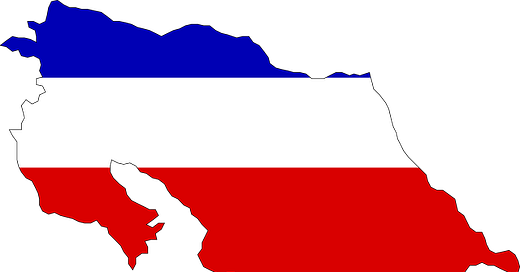





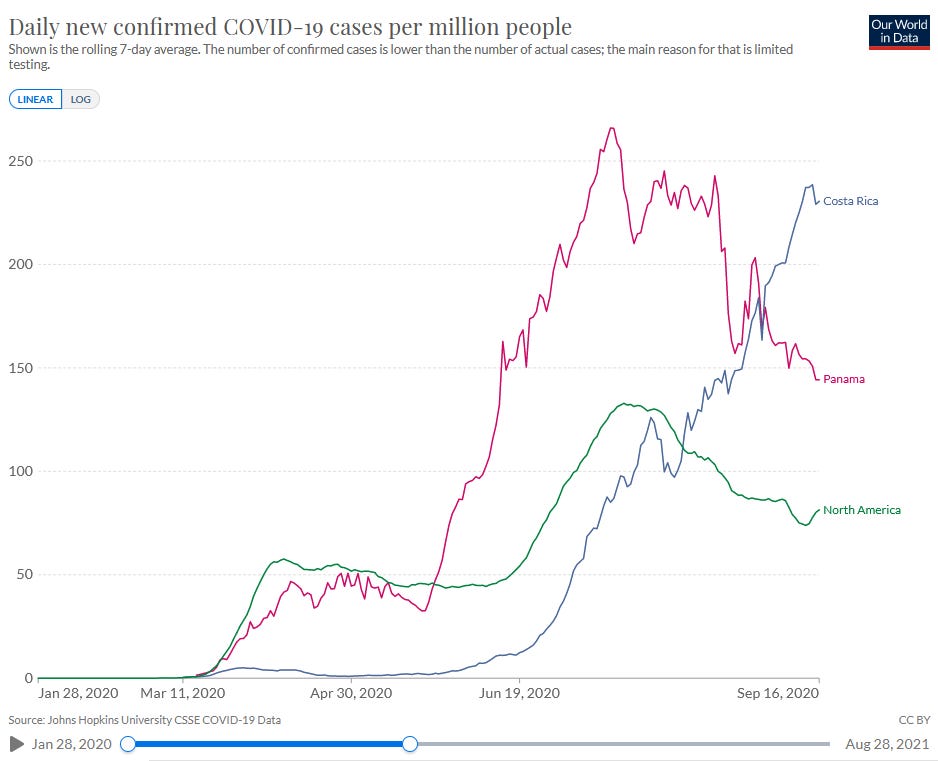
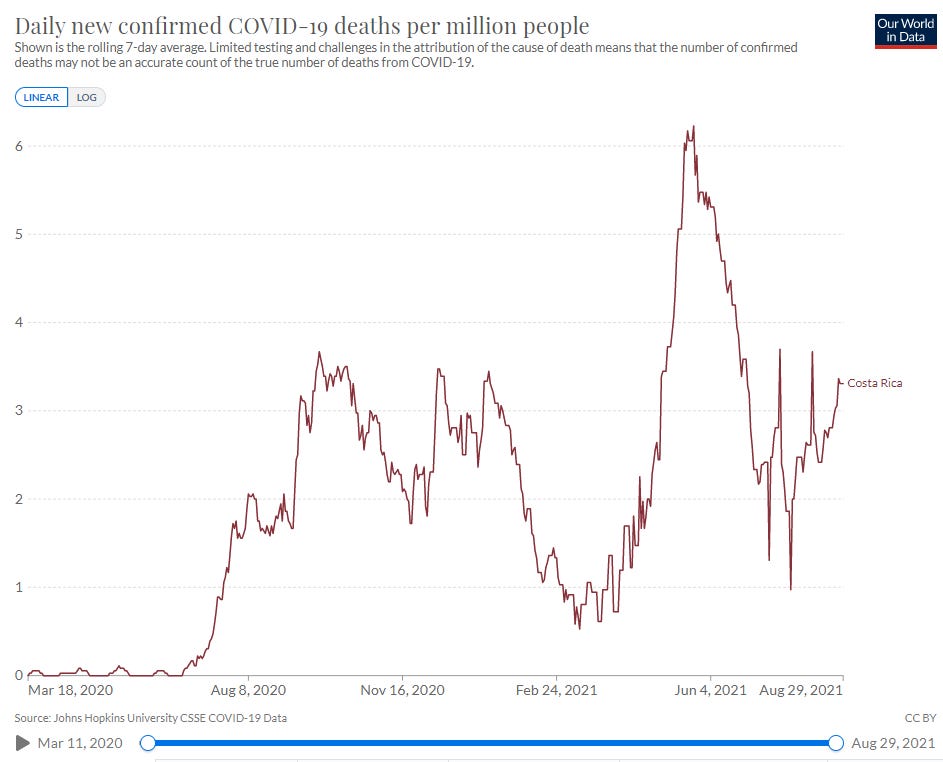
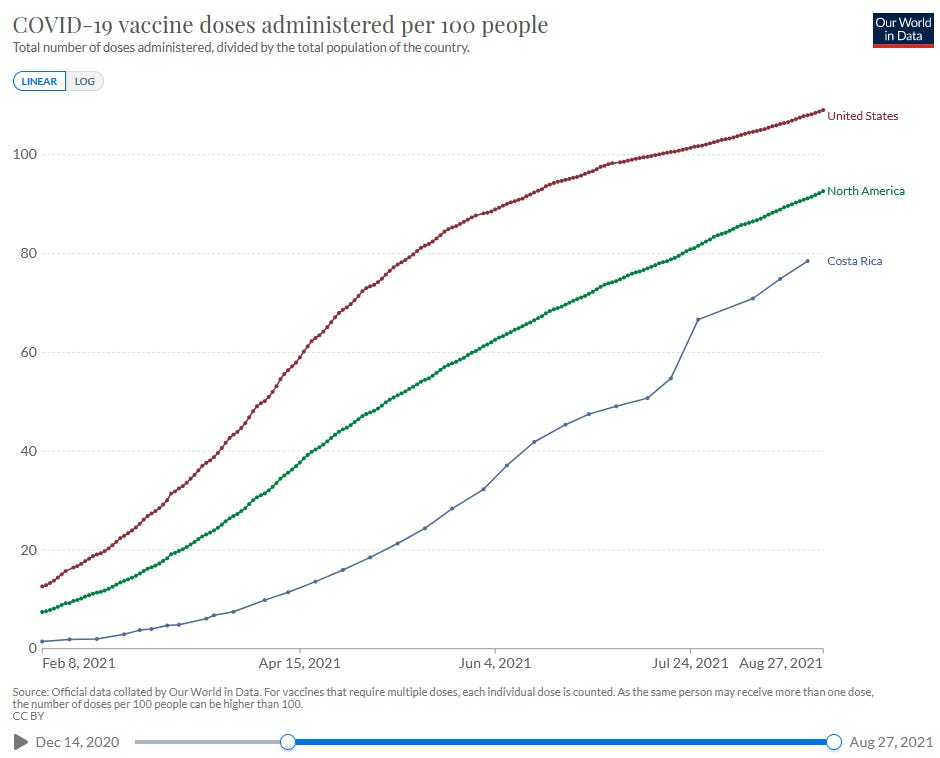
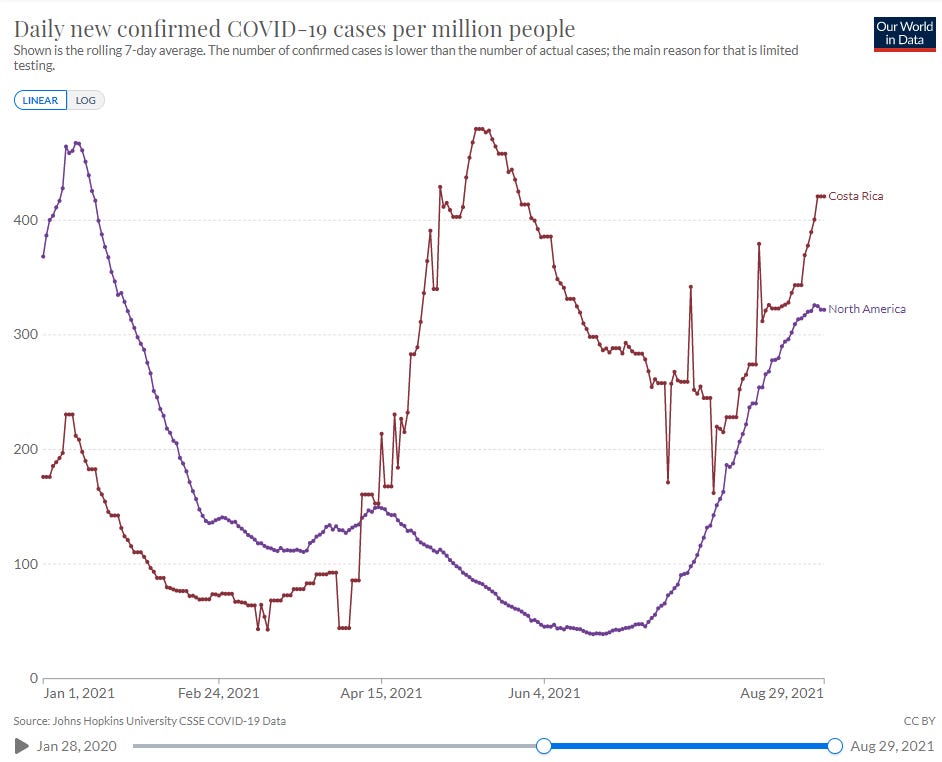

Jab them till you slab them. Still plenty of money to be made!
Much food for thought here, as always with your analyses. BUT... The PCR test is faulty and is to be withdrawn. Just how faulty might it be? I've read that it cannot differentiate between COVID and other similar viruses (flu, common cold...). Might it also not be able to distinguish between COVID infection and post-vax spike protein disease, thus the widely noticed post-vax rise in "infections" actually cases of vax-caused disease? I see the published studies' methods frequently report that the PCR test was used, without any qualification of number of cycles used... How reliable can statistical analyses be with such uncertainty?